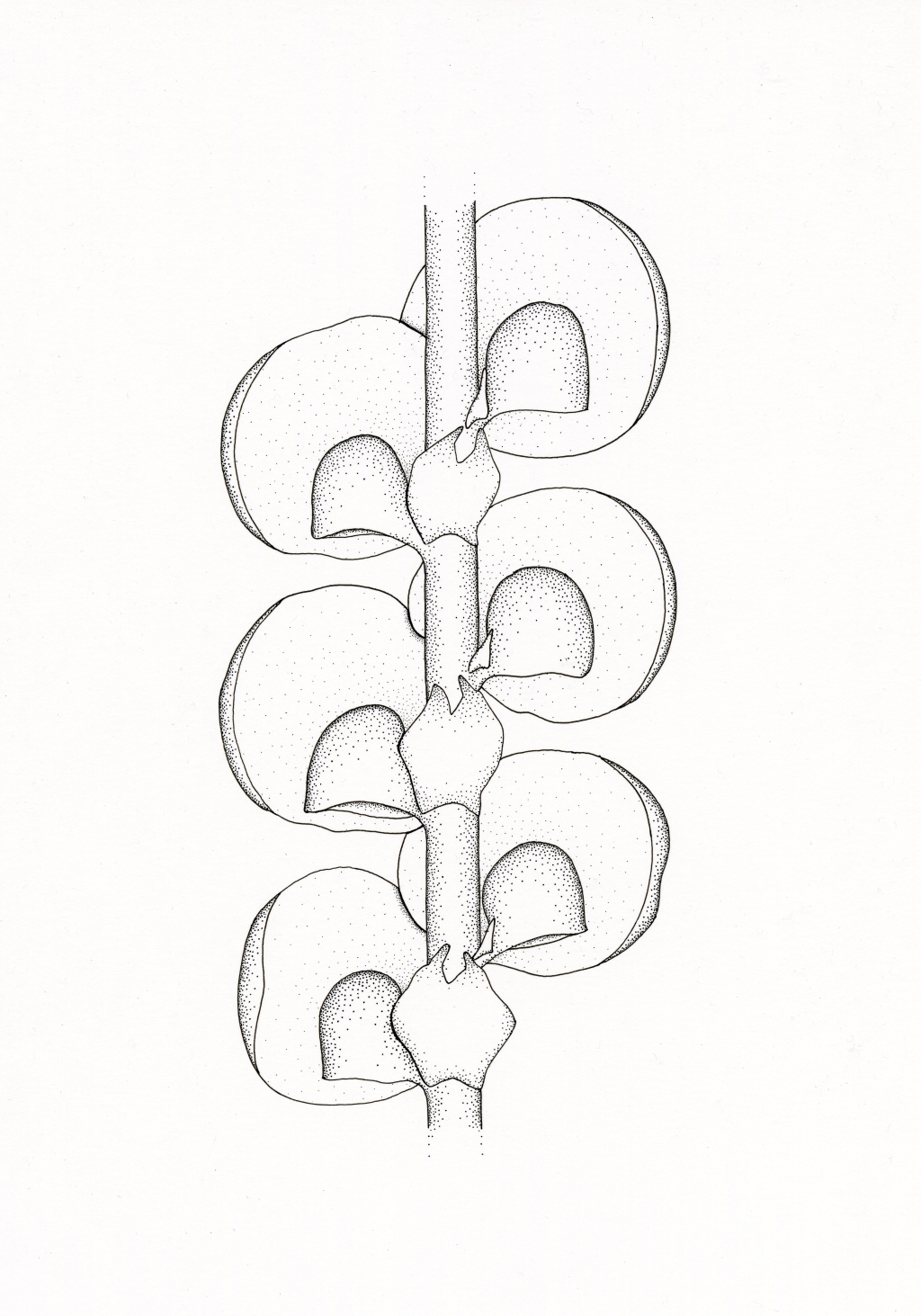Frullania probosciphora
TaylorEpiphytic or lithophytic, olive-green to reddish brown. Stems irregularly pinnate or bipinnately branched. Mid stem and branch lateral leaf lobes obovate to suborbicular, (0.22–) 0.3–1.13 mm long, (0.18–) 0.25–1.1 mm wide, with rounded to obtuse apex, not squarrose away from substrate when moist, contiguous to imbricate; cells oblong at base, becoming elliptic, circular or irregular elsewhere, and quadrate at margin, 10–23 µm long and 8–20 µm wide at margins, 14–30 µm long and 12–25 µm wide near centre, 20–49 µm long and 13–40 µm wide at base, with trigones throughout and occasional intermediate thickenings mostly away from margins and base. Lobule galeate, occasionally completely explanate, oblate to c. as long as tall, (0.12–) 0.13–0.51 mm long, (0.13–) 0.17–0.55 (–0.62) mm tall, rounded at apex; cells irregular 14–30 µm long, 8–20 µm wide, with trigones and intermediate thickenings throughout. Stylus lanceolate, (6–) 8–c. 70 cells, (3–) 4–5 (–7) cells wide, often with a single row of 3–4 cells at apex. Underleaves suborbicular, cuneate or rectangular in outline, bifid 1/4–1/3 of length, otherwise entire or with a single triangular tooth at shoulders, (0.15–) 0.22–0.65 mm long, (0.13–) 0.18–0.63 mm wide, flat, distant; sinus obtuse or acute; cells oblong to irregular, 16–28 µm long, 10–23 µm wide, with trigones and intermediate thickenings throughout. Perianth obloid, 7–10-keeled, (0.9–) 1–1.8 (–1.85) mm long, (0.63–) 0.7–0.95 (1.1) mm wide, truncate at apex, with long beak, smooth; keels rounded.
GleP, Brid, VVP, GipP, OtP, Gold, CVU, GGr, NIS, EGL, EGU, WPro, HSF, HNF, OtR, Strz, MonT, HFE, VAlp. The most common species in alpine and subalpine habitats, but also occurring along the Great Dividing Range and south to sea level in a variety of forested and rocky habitats. Also WA, SA, Qld, NSW, ACT, Tas and New Zealand.
This species has been confused with the very similar F. pentapleura, which seems to be the more common species in dry rocky habitats. Von Konrat & Braggins (2001) reviewed the differences between these species. Most of the differences listed exhibit some degree of overlap, but the most reliable difference provided by them is the size of the stylus, which in F. probosciphora is much more noticeable, looking like a clear lanceolate to triangular appendage, rather than being quite difficult to discern and mostly being comprised of a filament of cells as it is in F. pentapleura. Frullania pentapleura was named for the five keels that the perianth can occasionally have. Frullania probosciphora always has at least six keels so in these forms of F. pentapleura with five keels the perianth is diagnostic.
Von Konrat, M. & Braggins, J.E. (2001). Notes on five Frullania species from Australia, including typifications, synonyms, and new localities. Journal of the Hattori Botanical Laboratory 91: 229–263.
 Spinning
Spinning